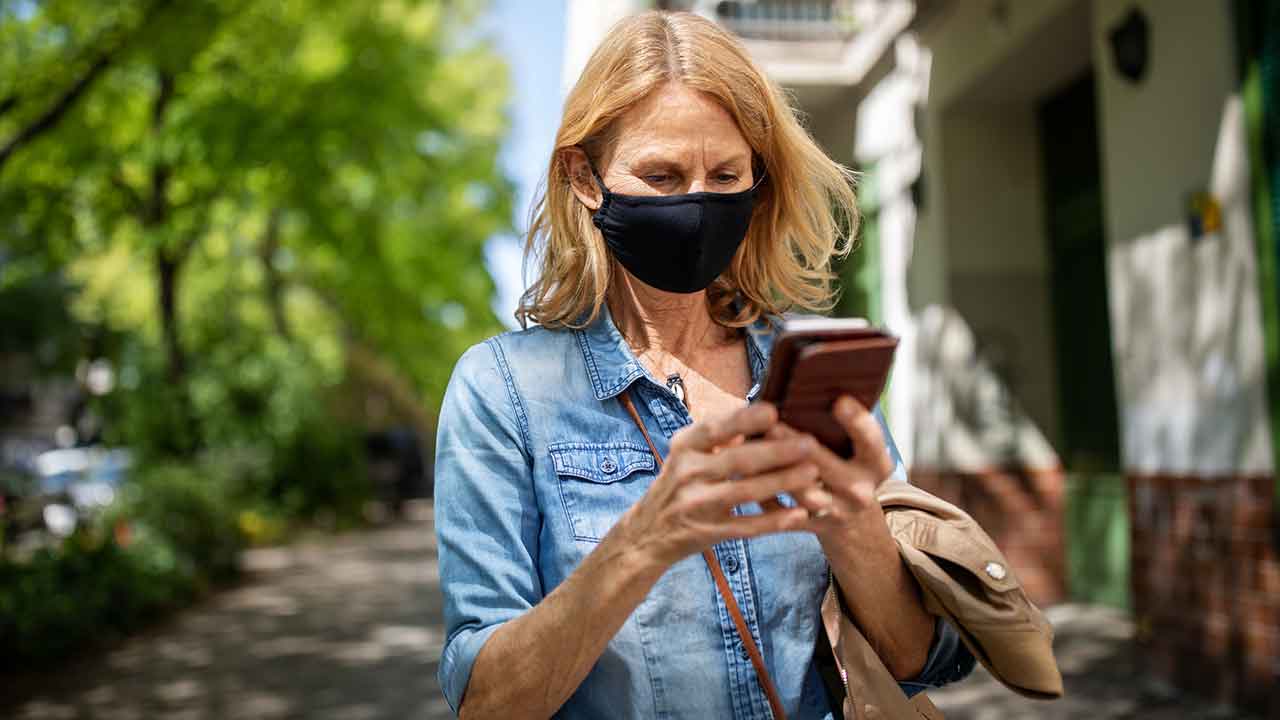What if your phone could tell you if you had COVID?

Timely and reliable access to COVID testing has been a source of pain across Australia in recent weeks. High demand, high infection rates and an overwhelmed workforce have seen long queues and delayed results for ‘gold-standard’ PCR tests. Rapid antigen tests – if you can find and afford one – will give you a quicker result, but they’re less sensitive than PCR. Not to mention, inserting a swab into your nose doesn’t get any more fun the more times you do it.
But what if there were a COVID test you could do at home using just a saliva sample, your smartphone and an inexpensive diagnostic kit? Similar speed to a rapid antigen test – similar accuracy to a PCR test. (And no nasal swab in sight.)
That’s the innovation promised by a paper published today in the journal JAMA Network Open.
In the paper, a team of US-based researchers describe the performance of a new system to test for infection with SARS-CoV-2 and influenza viruses. The technique is called smaRT-LAMP (smartphone-based real-time loop-mediated isothermal amplification).
Loop-mediated isothermal amplification (LAMP) is a technique that, similar to PCR, uses primers and a polymerase to amplify (make copies of) DNA. If DNA from a virus is present in a sample, the LAMP will pick it up. Because influenza and SARS-CoV-2 genomes are made of RNA, there’s an extra step called reverse transcription to convert the RNA into DNA before it’s amplified – this is also the case for PCR tests.
However, unlike PCR, LAMP is isothermal – meaning it works at a constant temperature. By contrast, PCR works by heating the sample to a very high temperature to separate the DNA strands, lowering the temperature to allow primers to bind to the exposed DNA, then raising the temperature slightly again to allow the new DNA copies to be extended – and repeating this process over and over again. That means you need specialised – and expensive – thermal cycling equipment for PCR, whereas LAMP can get by with just a hot plate to maintain a constant temperature.
Finally, the smaRT-LAMP system uses a smartphone’s camera and an app to detect whether the target virus is present in the saliva sample. A fluorescent dye in the reaction binds to the amplified DNA and is stimulated by an LED light, and the fluorescence is captured by the smartphone’s camera. The system can return a result within just 25 minutes – not too much longer than the 15 minutes required for current rapid antigen tests.
It’s also affordable, at an estimated US$7 (about $10) per smaRT-LAMP test, compared to US$10–20 ($14–28) per rapid antigen test and US$100–150 ($140–210) per PCR test.
Of course, you need to BYO smartphone, but that’s much more accessible than the thermal cyclers needed for PCR.
“Smartphones are ideally suited to meet the need for low-cost, widely accessible clinical POC [point-of-care] diagnostic tools, with smartphone global use estimated at nearly half the world’s population,” the paper’s authors noted.
In the study, the researchers tested the smaRT-LAMP system on saliva from 50 people – 20 who had tested positive to SARS-CoV-2 and 30 who had tested negative in PCR tests within 12 hours of sample collection. The participants had all presented to hospital with flu-like symptoms or shortness of breath.
The study found that the smaRT-LAMP results matched perfectly with the PCR results – everyone who tested positive or negative with one test had the same result for the other. smaRT-LAMP could also detect SARS-CoV-2 with high specificity against six other coronaviruses, and could detect RNA from the Alpha, Gamma, Delta, Epsilon and Iota variants of SARS-CoV-2. It’s also expected to be able to detect the Omicron variant, although this has not yet been tested.
Furthermore, the smaRT-LAMP system could detect influenza with high sensitivity and specificity, simply by using different primers to target the different virus – handy as COVID-19 and flu share many symptoms.
However, the primary goal at the moment isn’t convenient at-home testing for individual patients. Instead, the researchers were hoping to create a tool that could overcome testing challenges in healthcare settings, especially in countries with fewer technological and financial resources to handle the pandemic.
“The plan was to bring state-of-the-art diagnostics to resource-limited settings,” explains corresponding author Michael J Mahan, a professor at the University of California, Santa Barbara.
“We have provided the app and technology open-source and freely available to help reduce the world’s inequities.”
That’s not to say that the system couldn’t one day be adapted for home use.
“The next phase of the research is to develop low-cost, home-based testing,” says Mahan.
This article was originally published on Cosmos Magazine and was written by Matilda Handsley-Davis. Matilda is an Editorial Assistant at Cosmos.
Image: Getty Images
